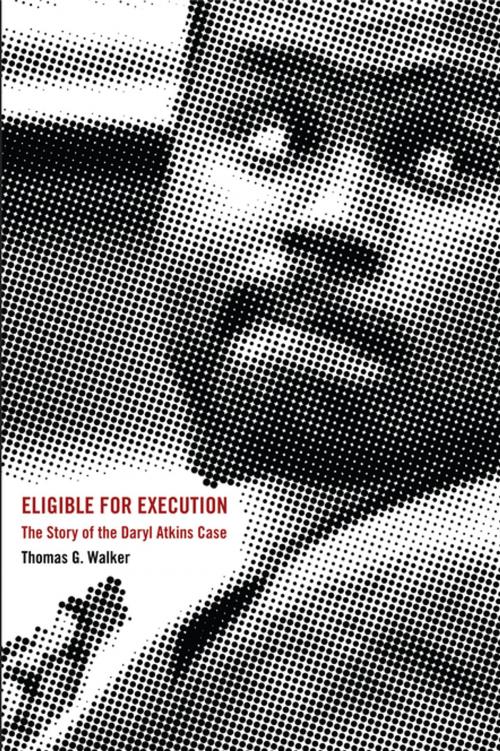Eligible for Execution
The Story of the Daryl Atkins Case
Nonfiction, Reference & Language, Law, International, Social & Cultural Studies, Political Science, Government| Author: | Thomas G. Walker | ISBN: | 9781483304533 |
| Publisher: | SAGE Publications | Publication: | July 15, 2008 |
| Imprint: | CQ Press | Language: | English |
| Author: | Thomas G. Walker |
| ISBN: | 9781483304533 |
| Publisher: | SAGE Publications |
| Publication: | July 15, 2008 |
| Imprint: | CQ Press |
| Language: | English |
This riveting and enlightening narrative unfolds on the night of August 16, 1996, with the brutal and senseless murder of Eric Nesbitt, a young man stationed at Langley Air Force Base, at the hands of 18-year-old Daryl Atkins. Over the course of more than a decade, Atkins’s case has bounced between the lowest and the highest levels of the judicial system. Found guilty and then sentenced to death in 1998 for Nesbitt’s murder, the Atkins case was then taken up in 2002 by the U.S. Supreme Court. The issue before the justices: given Daryl Atkins’s mental retardation, would his execution constitute cruel and unusual punishment, in violation of the Eighth Amendment? A 6–3 vote said yes.
Daryl Atkins’s situation was far from being resolved though. Prosecutors claimed that Atkins failed to meet the statutory definition of mental retardation and reinstituted procedures to carry out his death sentence. Back in circuit court, the jury returned its verdict: Daryl Atkins was not retarded. Atkins’s attorneys promptly filed a notice of appeal, and the case continues today.
Drawing on interviews with key participants; direct observation of the hearings; and close examination of court documents, transcripts, and press accounts, Thomas G. Walker provides readers with a rare view of the entire judicial process. Never losing sight of the stakes in a death penalty case, he explains each step in Atkins’s legal journey from the interactions of local law enforcement, to the decision-making process of the state prosecutor, to the Supreme Court’s ruling, and beyond. Walker sheds light on how legal institutions and procedures work in real life—and how they are all interrelated—to help students better understand constitutional issues, the courts, and the criminal justice system. Throughout, Walker also addresses how disability, race, and other key demographic and social issues affect the case and society’s views on the death penalty.
This riveting and enlightening narrative unfolds on the night of August 16, 1996, with the brutal and senseless murder of Eric Nesbitt, a young man stationed at Langley Air Force Base, at the hands of 18-year-old Daryl Atkins. Over the course of more than a decade, Atkins’s case has bounced between the lowest and the highest levels of the judicial system. Found guilty and then sentenced to death in 1998 for Nesbitt’s murder, the Atkins case was then taken up in 2002 by the U.S. Supreme Court. The issue before the justices: given Daryl Atkins’s mental retardation, would his execution constitute cruel and unusual punishment, in violation of the Eighth Amendment? A 6–3 vote said yes.
Daryl Atkins’s situation was far from being resolved though. Prosecutors claimed that Atkins failed to meet the statutory definition of mental retardation and reinstituted procedures to carry out his death sentence. Back in circuit court, the jury returned its verdict: Daryl Atkins was not retarded. Atkins’s attorneys promptly filed a notice of appeal, and the case continues today.
Drawing on interviews with key participants; direct observation of the hearings; and close examination of court documents, transcripts, and press accounts, Thomas G. Walker provides readers with a rare view of the entire judicial process. Never losing sight of the stakes in a death penalty case, he explains each step in Atkins’s legal journey from the interactions of local law enforcement, to the decision-making process of the state prosecutor, to the Supreme Court’s ruling, and beyond. Walker sheds light on how legal institutions and procedures work in real life—and how they are all interrelated—to help students better understand constitutional issues, the courts, and the criminal justice system. Throughout, Walker also addresses how disability, race, and other key demographic and social issues affect the case and society’s views on the death penalty.















